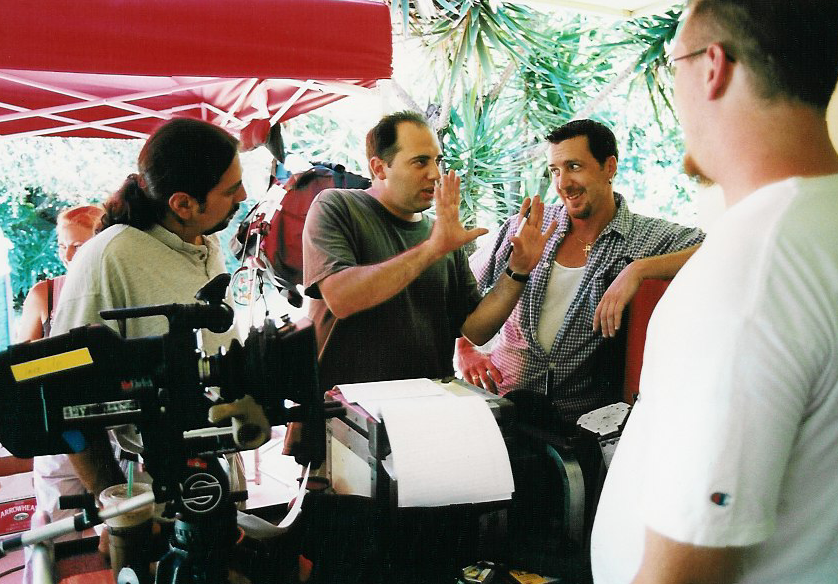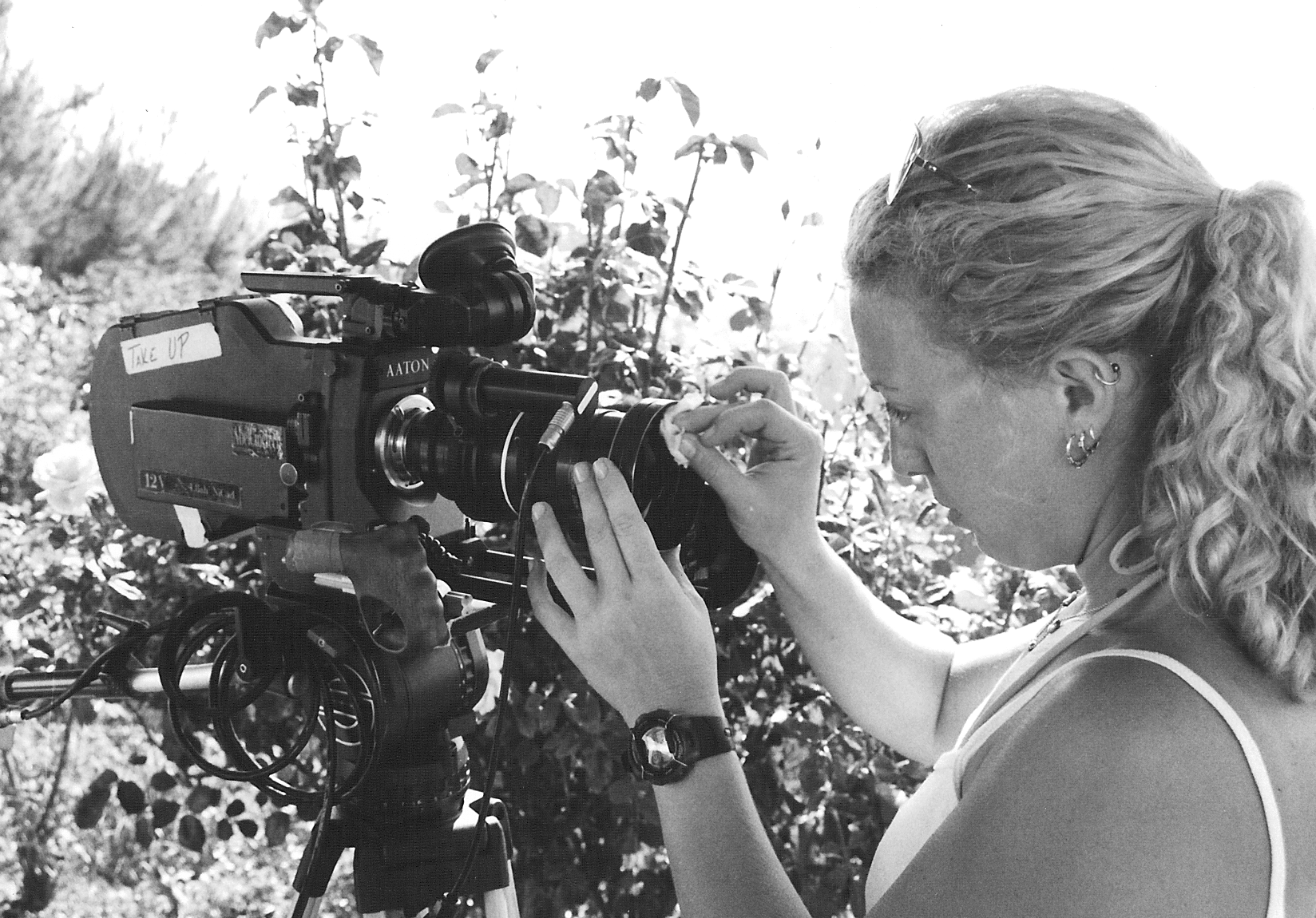Thinking of being a Cinematographer
The Roll of the Cinematographer
A Cinematographer (or Director of Photography or DOP), is the “director” over the camera and lighting crews working on a film,
television production or other live action piece that requires a camera or multiple cameras. The Cinematographer is also responsible
for making artistic and technical decisions related to the image.

Cinematographer explains shot to Director and Crew
Many think that this is the Director’s job. And although the Director will work closely with the Cinematographer,
when you see the beautiful images on screen, the framing, the lighting, the movement of the camera – this is the work of the Cinematographer.
Whereas the Director is more of a creative, the Cinematographer is both a creative and a techie. He or she must be up to speed
on the latest camera’s, lenses, film stock, digital techniques, lighting methods, etc. to be able to execute the Director’s vision
as best as possible.
In the infancy of Hollywood, the way the picture looked was key. There was no dialogue and the story had to be told by entirely
by the camera.
The best way to get into the world of Cinematography is to start out as in intern or assistant to the DOP, as a Camera Assistant,
or a Loader (the one who loads the film into reels). Many films today are shot digitally, so this position had changed with the times,
but nonetheless, if you are interested in being a cinematographer get a position on a film or television production in the Camera department,
under someone who can teach you the ropes.
Here are some tips to help you through your journey as a Cinematographer.

Assistant Camera Person
Start on any film you can work on. Do it as an intern, if you must, but cozy up to an existing Cinematographer or
Camera Person and let them know you want to learn. When on the job, soak in as much information as you can. Watch everything
they do, and ask a lot of questions about the camera, the lenses, the lighting. There’s a lot to learn, be a sponge.
You cannot be a master unless you are a student first. Once you understand the basic of cinematography you can
expand your knowledge by trying something different. A Cinematographer should have a vision of the world through the lens.
Find your vision. Films with amazing cinematography usually have a theme of some kind. Did you ever notice that Blade Runner
is dark and gloomy? What about comparing the cinematography of Harry Potter and the Deathly Hallows to the cinematography of
Harry Potter and the Sorcerer’s Stone? The latter is much brighter, signifying hope – a new beginning, while the last two films
portray a sense of doom, as they are very grey, and washed out.
Once you develop your vision of the world through the lens, you must always let the story tell the story first.
The camera, hence the Cinematographer’s job, is to allow the camera to naturally tell the story. Don’t force a theatrical
shot in a place where the story doesn’t warrant it. If the scene requires two people talking in a coffee shop, unless there is some
underlying reason to do so, don’t use tilted angles and strange filters – again – unless there are zombies serving them the food.
Yes, the camera shot and position is important, but almost just as important is the lighting. Fluidity is incredibly
important, and within a scene, the shots must match when it comes to lighting. Otherwise, the scene looks cheap and amateurish.
Just like the camera is, in essence, one of the characters, so is the lighting to a Cinematographer.
It’s so easy to get excited about a new camera and what it can do, especially today in the digital age, but the best
camera in the world can’t tell a story. It’s just a tool, albeit a great one, to tell the story.
The Cinematographer also works closely with the Director in storyboarding scenes and creating Shot Lists.
You can also use Gorilla Scheduling to create a full film schedule including Storyboard and Shot Lists. Click the link
below for a free demo of Gorilla.
For a complete working demo of Gorilla Scheduling click here for Macintosh
or here for Windows.
The Gorilla Ratebook can give you up-to-date guild rates for Cinematographers
and the rest of the Camera Department.
|
|

